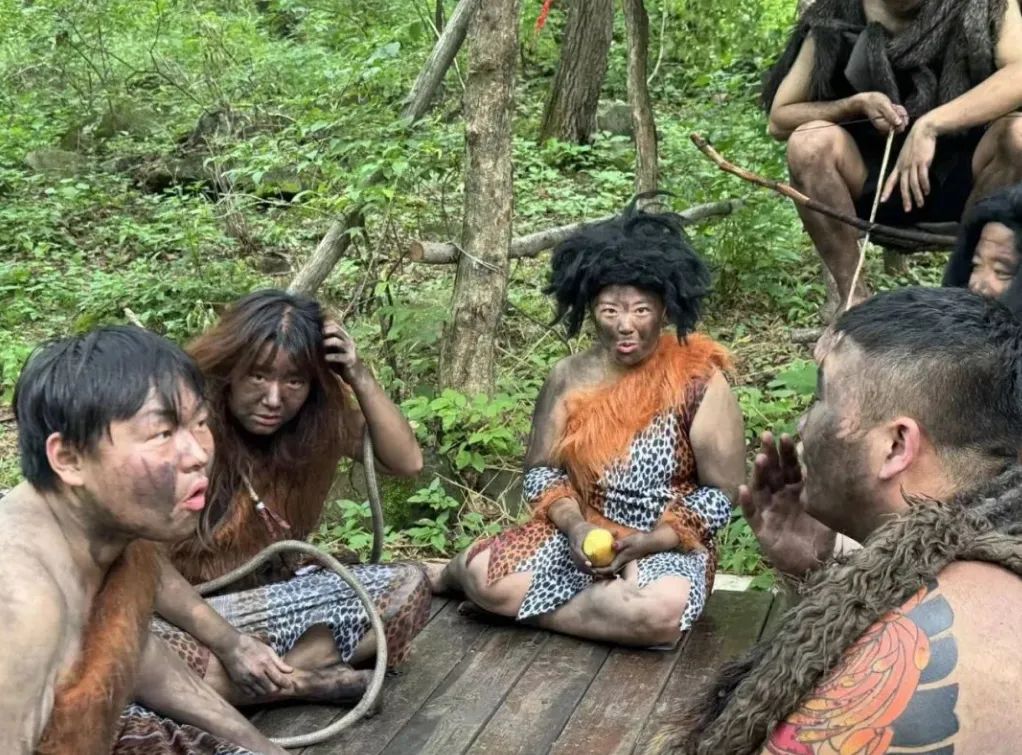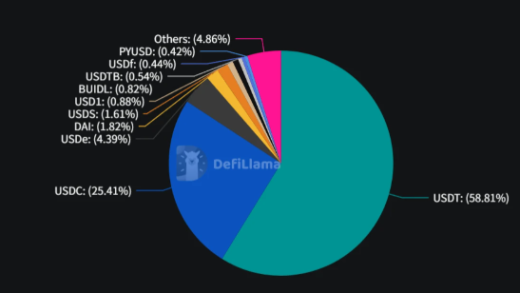
Read More《日薪500“野人”高薪岗,景区NPC变香饽饽》
Positive Reviews: The Innovation of Scenic Area NPCs Activates the Cultural and Tourism Market and Reconstructs a New Paradigm of the “People – Scenery Relationship”
In recent years, the domestic cultural and tourism industry has been facing the dilemma of severe homogenization and single tourist experiences. The rise of scenic area NPCs (Non – Player Characters), especially the popularity of special positions such as the “Wild Man Position” and “Ancient – Style Handsome Guys”, has injected new vitality into the industry. The positive significance of this innovative model is mainly reflected in the following three aspects:
I. Break the Traditional Logic of “Scenic Spots First” and Build a New Immersive Cultural and Tourism Experience
The core attraction of traditional scenic areas often relies on natural or cultural landscapes. However, with the proliferation of antique blocks that all look the same and commercial streets that are mere copies, tourists are gradually losing interest in the shallow experience of “seeing the scenery and taking pictures”. The emergence of scenic area NPCs essentially takes “people” as a new experience carrier, and reconstructs the “people – scenery relationship” through interactivity, storytelling, and emotional connection.
Take the “Wild Man NPCs” in Shennongjia as an example. Their work is not simply about role – playing. Through behaviors such as “daydreaming and having fun” and “accepting feeding” that are close to “primitive wildness”, they allow tourists to experience the fantasy of “living with wild men” in the mountains and forests. The “Little Beggar” in Qingming Shanghe Garden triggers tourists’ empathy with “broken – feeling” acting skills and even forms an emotional bond through the “feeding interaction”. This model of “real – person interaction + scene immersion” brings static scenic spots to life. Tourists change from “bystanders” to “participants”, and the depth of experience is significantly improved.
II. Create New Employment Scenarios to Meet the “Anti – involution” Career Needs of Young People
Currently, the employment concept of young people has shifted from “stable and high – paying jobs” to “value matching” and “self – expression”. The scenic area NPC positions just meet this need. The recruitment requirements of the “Wild Man Position” in Shennongjia, which offers a daily salary of 500 yuan, has no strict educational requirements, and emphasizes “releasing one’s nature”, the “wild behavioral art” positioning of the “Wild Man Position” in Benxi, Liaoning with a monthly salary of 5000 yuan, and the “outgoing personality” requirement of the “Ancient – Style Handsome Guys” in Luoyang with a monthly salary of 30,000 yuan, all convey a message: Work can be an extension of “being yourself”.
For college students and young job – seekers, these positions not only provide short – term income (such as summer part – time jobs) but also meet the psychological needs of “escaping from the cubicle” and “releasing stress”. The news that tens of thousands of people applied for the “Wild Man Position” and thousands of job applications were received on the same day for ancient – style NPCs shows the strong resonance of young people with “non – standardized occupations”. This employment innovation also provides a new channel for the connection between the cultural and tourism industry and the young group.
III. Leverage High Traffic with Low Cost and Provide a Feasible Path for Scenic Areas to “Break through the Circle”
Compared with spending hundreds of millions of yuan to build “artificial ancient towns” (such as the Dayong Ancient City in Zhangjiajie with a loss of over 500 million yuan), scenic area NPCs require low investment, yield quick results, and have the potential for “social fission”. For example, the “Little Beggar” in Qingming Shanghe Garden became popular on the Internet for his acting skills, driving the traffic of the scenic area. The “Snow Cake Monkey” in Jilin became a famous live – streaming scene with “feeding interaction”. Hengdian Scenic Area created an immersive “script – killing” scene with professional extras, all achieving “great publicity” with “small costs”.
More importantly, NPCs can “personify” the natural or cultural characteristics of scenic areas. Shennongjia combines NPCs with the mountain and forest environment based on the regional IP of the “Wild Man Legend”. The Tanhe Ancient City in Ningxiang recruits “Jiang Taigong” NPCs to attract middle – aged and elderly people with the “fishing culture”. The “All – Staff NPC” model in Wuzhen strengthens the cultural label of the Jiangnan region with the “real water – town life”. This combination of “characteristic NPCs + local culture” enables scenic areas to shift from “selling scenery” to “selling experiences”, providing a possibility for scenic areas to break through the homogeneous competition.
Negative Reviews: Hidden Worries behind the NPC Craze – Challenges from “Traffic Carnival” to “Operational Long – Distance Running”
Although the popularity of scenic area NPCs is exciting, the problems exposed in its development cannot be ignored. If blindly following the trend and ignoring the essence, this “NPC craze” may turn from a “cure” to a “new bubble”.
I. Over – reliance on NPCs May Deviate from the Core Value of Scenic Areas and Fall into the Trap of “Losing the Essence for the Trivial”
Some scenic areas, in pursuit of traffic, design NPCs as mere “attention – grabbing” gimmicks, which actually cover up their core resources. For example, as reported in the news, some scenic areas imitated the “Snow Cake Monkey” and launched the “Starving Monkey King”, but only stayed at the level of “pure eating interaction”. Some “Wild Man Positions” were even proposed to design vulgar content such as “wild men fighting each other” and “mating” to cater to the tourists’ curiosity. This “interaction for the sake of interaction” not only consumes the tourists’ trust but also may turn the scenic area into a “behavior art exhibition venue”, losing the exploration of core resources such as natural landscapes and historical cultures.
The failure of the Dayong Ancient City in Zhangjiajie has sounded the alarm: If a scenic area lacks cultural depth and core attraction, it is difficult to be sustainable only by short – term gimmicks (such as NPCs). If scenic areas regard NPCs as a “life – saving straw” rather than an “experience supplement”, they may end up repeating the same mistakes as the homogeneous “artificial ancient towns”.
II. The Sustainability of NPC Positions Is Doubtful, and the “High Heat” Can Hardly Conceal the “Low – Barrier” Dilemma
Currently, the entry thresholds for scenic area NPCs are generally low (such as no educational requirements for the “Wild Man Position” and only the need to know how to fish for the “Jiang Taigong” position). Although this reduces the operating cost, it also leads to intensified homogeneous competition. When characters such as “wild men”, “little beggars”, and “Sun Wukong” are replicated by scenic areas across the country, the “characteristics” of NPCs will quickly disappear, and the tourists’ freshness will also fade. For example, the Taihang Wuzhishan in Handan, Hebei once recruited a “Sun Wukong” with the requirement of “eating under the mountain”, but its attractiveness will surely decline when similar characters appear in many places.
In addition, there are also hidden dangers in the work experience of NPCs. As reported in the news, the “Wild Men” in Benxi, Liaoning need to work from 8 am to 5 pm plus night shifts, with high outdoor physical consumption. The inappropriate interactions of some tourists (such as a child smelling the “wild man” after picking his buttocks) may affect the psychological state of the practitioners. If scenic areas only focus on “traffic harvesting” and ignore the professional guarantees of NPCs (such as work intensity and rights protection), it may lead to the loss of practitioners and ultimately damage the reputation of the scenic area.
III. The Risk of Public Opinion Is Amplified, and the “Immersive Experience” May Evolve into a “Controversial Scene”
The interactive nature of NPCs determines that their relationship with tourists is closer and more likely to cause conflicts. For example, tourists may have overly high expectations for the “wild” behavior of NPCs (such as demanding “wild men fighting each other”), and if NPCs overly cater to them, it may touch on public order and good customs. The “cross – boundary interactions” of some tourists (such as physical contact and verbal offense) may lead to conflicts. Some tourists even question the authenticity of “fake wild men” and “fake beggars”, believing that the scenic area is “cheating consumers”.
As reported in the news, when a tourist had diarrhea, the NPC needed to “switch back to modern society”. If the boundary of “switching between the play and reality” is not handled properly, it may damage the sense of immersion. More importantly, if scenic areas allow NPCs to “do anything for attention” in pursuit of traffic, once an opinion crisis (such as vulgar and false publicity) occurs, it will cause long – term damage to the brand of the scenic area.
Suggestions for Entrepreneurs: From “Traffic Thinking” to “Value Thinking”, Creating a Sustainable NPC Operation Model
The NPC craze in scenic areas provides new opportunities for entrepreneurs (especially those in the cultural and tourism industry). To avoid repeating the mistakes of homogeneous competition, strategies need to be optimized from the following three aspects:
I. Take “Local Culture” as the Core and Make NPCs the “Cultural Spokespersons” of Scenic Areas
The design of NPCs needs to be deeply bound to the natural or cultural characteristics of scenic areas, rather than blindly following the trend. For example, Shennongjia can develop storylines based on the “Wild Man Legend” (such as the exploration mission of “searching for the wild man tribe”). The “Jiang Taigong” in the Tanhe Ancient City in Ningxiang can integrate the “Jiang Ziya Culture” (such as explaining fishing allusions and teaching traditional fishing methods). The “All – Staff NPC” in Wuzhen can strengthen the authenticity of the “water – town life” (such as demonstrating traditional handicrafts and interacting in the local dialect). Through the in – depth integration of “NPCs + culture”, the uniqueness of the experience can be enhanced, and homogeneity can be avoided.
II. Establish a “Professional Ecosystem” for NPCs and Balance “Personality Release” and “Regulatory Management”
To address the sustainability issue of NPC positions, entrepreneurs need to build a complete professional system:
– Define work boundaries: Formulate interaction norms (such as prohibiting vulgar behaviors and restricting tourists’ cross – boundary interactions) to protect the rights and interests of NPCs.
– Provide skill training: Provide training for different characters (such as “wild men” need to understand mountain and forest ecological knowledge, and “ancient – style handsome guys” need to master historical and cultural common sense) to improve professionalism.
– Design a career development path: From “basic NPCs” to “senior characters” (such as “wild man chiefs” and “experts on ancient town anecdotes”), provide growth space for practitioners and reduce the turnover rate.
III. Aim at “Experience Upgrade” and Promote the “Synergistic Evolution” of NPCs and Scenic Area Resources
NPCs should not be isolated “traffic tools” but need to form a synergy with the hardware (such as landscapes and facilities) and software (such as activities and services) of scenic areas. For example:
– Scene linkage: Set up a “primitive life experience area” (such as building grass huts and displaying traditional hunting tools) in the “Wild Man Position” area to enhance the sense of immersion.
– Activity extension: Design theme activities around NPCs (such as the “Wild Man Culture Festival” and the “Ancient – Style Elegant Gathering”) to extend the tourists’ stay time.
– Data feedback: Optimize the operation strategy through tourists’ interaction data (such as preferred NPC types and stay time) to achieve “precise experiences”.
IV. Be Wary of the “Gimmick Trap” and Adhere to the “Long – Term Value” Orientation
Entrepreneurs need to be clear that NPCs are an “additive to the experience”, not the “core competitiveness”. The fundamental attraction of scenic areas still lies in natural landscapes, historical heritage, or unique cultures. Therefore, while developing NPCs, it is necessary to simultaneously improve the basic services (such as transportation and sanitation), cultural exploration (such as exhibitions and explanations), and ecological protection (such as avoiding excessive commercialization and environmental damage) of scenic areas. Only when the “hardware + software + experience” are integrated can the leap from a “traffic hit” to a “long – term brand” be achieved.
Conclusion
The rise of scenic area NPCs is a positive exploration of the cultural and tourism industry in the homogeneous dilemma. It not only shows the market’s desire for “immersive experiences” but also exposes the industry’s confusion about “innovation paths”. For entrepreneurs, the key is to break out of the “traffic thinking” and take “value creation” as the core, making NPCs an “emotional bond” connecting tourists and scenic areas, rather than a “traffic tool”. Only in this way can this “NPC craze” truly promote the cultural and tourism industry to move from the “scenic – spot era” to the “experience era”.





